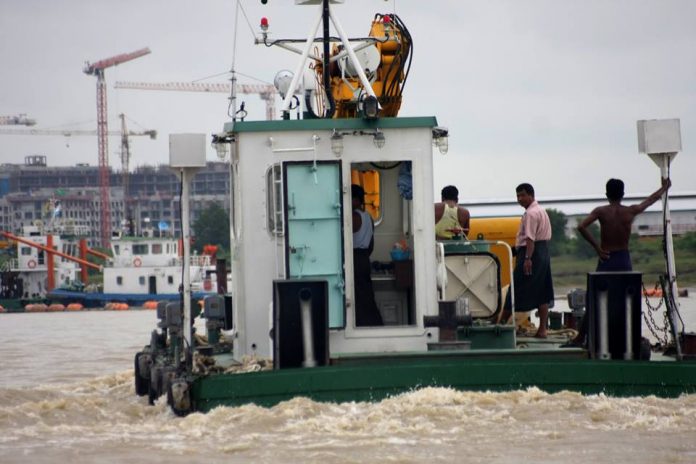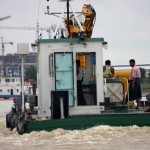“If the great bell is really found, I am happy for that. It is only in [the] press release that the bell has been found. But, what day, where, which divers, how they examine[d] and how they found [the bell] after touching it, is not stated. So, it can only be believed after the bell is salvaged and taken to the land,” said Nai Ye Zaw, in an interview with IMNA.
Nai Ye Zaw continued that confirmation can only be made after analyzing whether its weight is correct, it includes Mon language, and it can be read in accordance with historic facts. Only after such analysis is performed can confirmation be made that the bell is, in fact, the Great Dhammazedi Bell that was made and donated by Dhammazedi, the King of the Hongsarawatoi Kingdom.
“What we are doing now is the matter of what no one can think of; [what] we are doing [is what] no one is unable to be doing. What we are doing now is not childish play; because we have found it for sure, we made the press release,” said U San Lin.
Details regarding methods used to find the bell have yet to be released; as traditional Burmese methods were used to search and salvage the bell, such details must be kept confidential.
According to a statement from Maung San Linn (Myae Pon) Kawthoung, all of the details can only be announced after permission has been requested from respective spiritual guardians.
“Some people thought it could be a lie, and they came to tell us that. As the divers said they have found [the bell], only [then] did we get to know about that. But, we did not see it below the river,” said Nai Min Aung, vice-chairman of the supporting subcommittee for the Dhammazedi Bell salvage team operation.
Nai Min Aung adds that the bell salvage team is preparing to take to bell to land, and to report their findings to the Rangoon Division Government.
Nai Ye Zaw states that, although King Dhammazedi also cast a smaller bronze bell with a weight of 3000 viss, there is no historical record that the smaller bell also sank into the same river. He continues that those who say they also found the smaller bell are just making it up.
With permission granted from the Rangoon Division Government, the Dhammazedi Bell salvage team began their search for the bell on July 9th. Along with 10 ethnic Monken, also known as sea gypsies, who worked as divers, the salvage team was comprised of 70 members.


